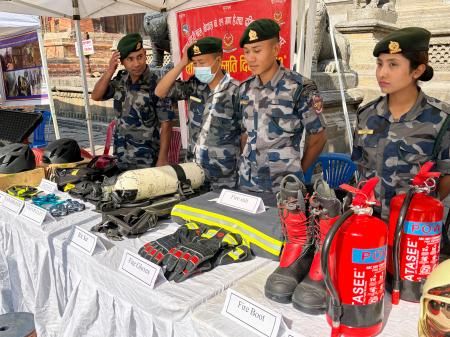Disaster Resilience in Nepal: Post-Earthquake Progress – A Decade of Recovery and Reconstruction
Nepal's resilience has been tested repeatedly, most notably by the devastating 2015 earthquake. This catastrophic event, which claimed thousands of lives and left widespread destruction, spurred a global effort to aid in recovery and reconstruction. But a decade on, how far has Nepal progressed in building disaster resilience? This article explores the advancements, challenges, and the ongoing journey towards a safer future.
The Earthquake's Devastating Impact: A Reminder of Vulnerability
The 2015 Gorkha earthquake, measuring 7.8 on the Richter scale, had a profound and lasting impact on Nepal. The immediate aftermath was marked by:
- Massive Loss of Life: Thousands perished, and many more were injured.
- Widespread Destruction of Infrastructure: Homes, schools, hospitals, and critical infrastructure were reduced to rubble, particularly in the Kathmandu Valley and surrounding mountainous regions.
- Economic Disruption: The earthquake crippled the Nepali economy, impacting tourism, agriculture, and other vital sectors.
- Social Disruption: Communities were shattered, families displaced, and social support systems strained.
Progress in Disaster Resilience: A Decade of Efforts
The international community rallied to support Nepal's recovery. Significant progress has been made in several key areas:
Improved Building Codes and Construction Practices
- New Building Codes: Nepal has implemented stricter building codes designed to withstand seismic activity. This includes regulations on materials, design, and construction techniques.
- Training and Capacity Building: Efforts are underway to train construction workers and engineers in earthquake-resistant construction methods.
- Retrofitting Existing Structures: Programs are gradually addressing the retrofitting of older buildings to improve their seismic resilience.
Strengthening Early Warning Systems
- Seismic Monitoring Networks: Investments have been made to enhance Nepal's seismic monitoring network, providing earlier and more accurate earthquake warnings.
- Community-Based Disaster Preparedness: Initiatives focus on educating communities about earthquake preparedness, evacuation plans, and emergency response procedures.
- Improved Communication Infrastructure: Efforts are underway to improve communication networks to ensure timely dissemination of warnings and information during emergencies.
Enhanced Disaster Response Mechanisms
- Improved Coordination: National and local authorities have worked to improve coordination and collaboration during disaster response efforts.
- Increased Disaster Relief Capacity: Nepal has strengthened its capacity to provide immediate relief, including search and rescue operations, medical assistance, and provision of essential supplies.
- Community-Based Disaster Management: Emphasis is being placed on strengthening community-based disaster management committees, empowering local communities to play a crucial role in preparedness and response.
Challenges Remaining in the Path to Resilience
Despite progress, significant challenges remain:
- Funding Gaps: Securing sufficient and sustained funding for long-term resilience-building initiatives remains a major hurdle.
- Implementation Challenges: Translating policies and plans into effective on-the-ground implementation remains a challenge.
- Enforcement of Building Codes: Ensuring consistent and effective enforcement of the new building codes is crucial.
- Addressing Vulnerability in Remote Areas: Reaching and supporting vulnerable communities in remote and mountainous areas presents logistical difficulties.
- Climate Change Impacts: The increasing frequency and intensity of extreme weather events, exacerbated by climate change, pose additional challenges.
The Road Ahead: Sustained Commitment for a Resilient Nepal
Building disaster resilience is a long-term commitment. Nepal requires sustained investment, improved coordination, and community engagement to effectively mitigate future risks. Continuous monitoring, evaluation, and adaptation of strategies are crucial. The lessons learned from the 2015 earthquake should inform future preparedness efforts and contribute to a more resilient and safer Nepal.
Further Reading:
- )
Call to Action: Learn more about how you can support Nepal's ongoing efforts in building disaster resilience. Consider donating to reputable organizations working in the region or volunteering your skills to assist in recovery and reconstruction efforts.
